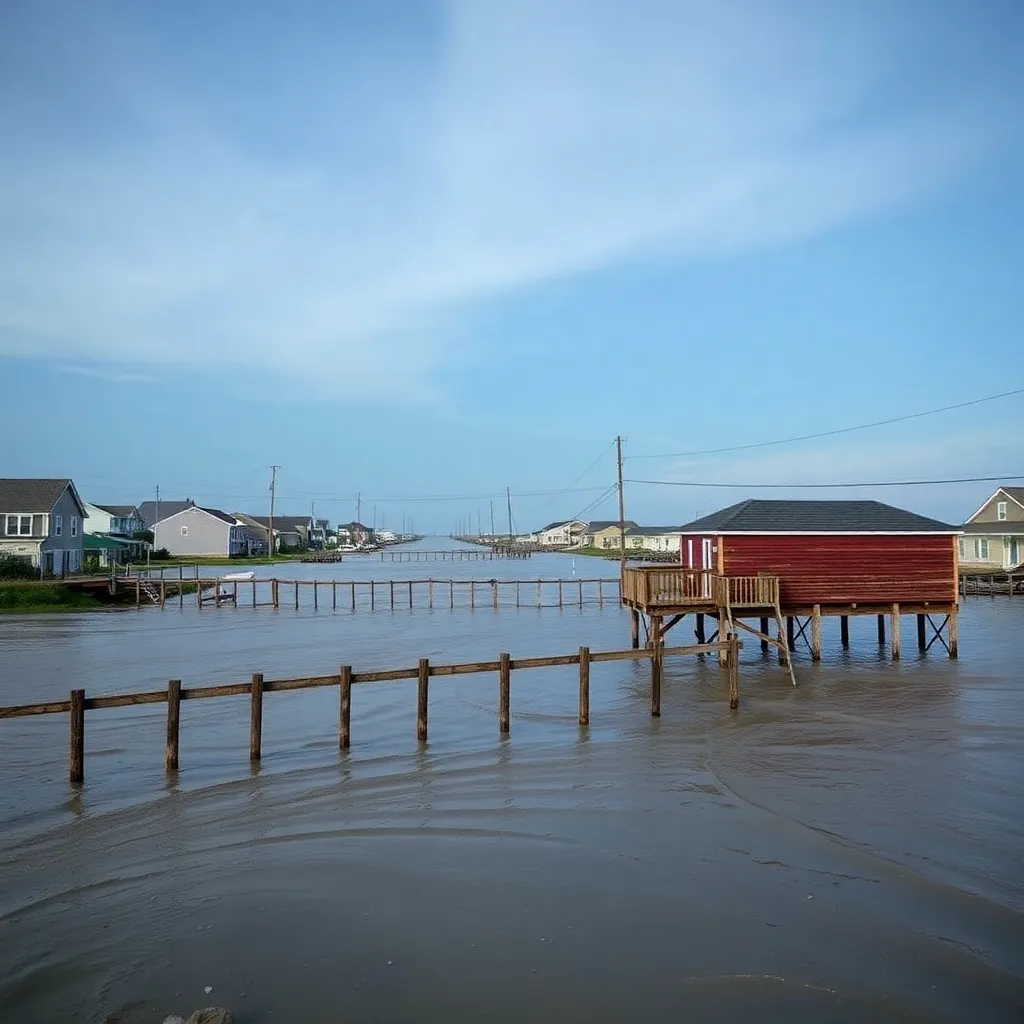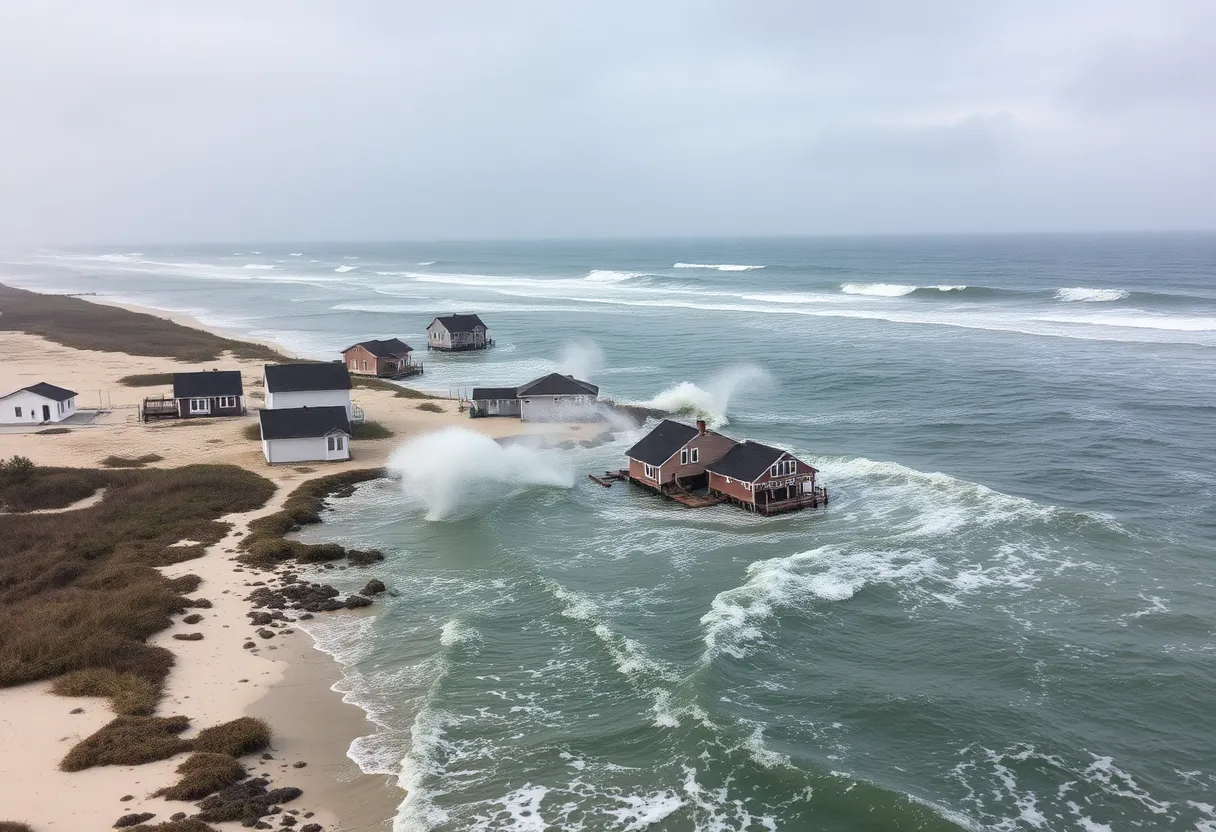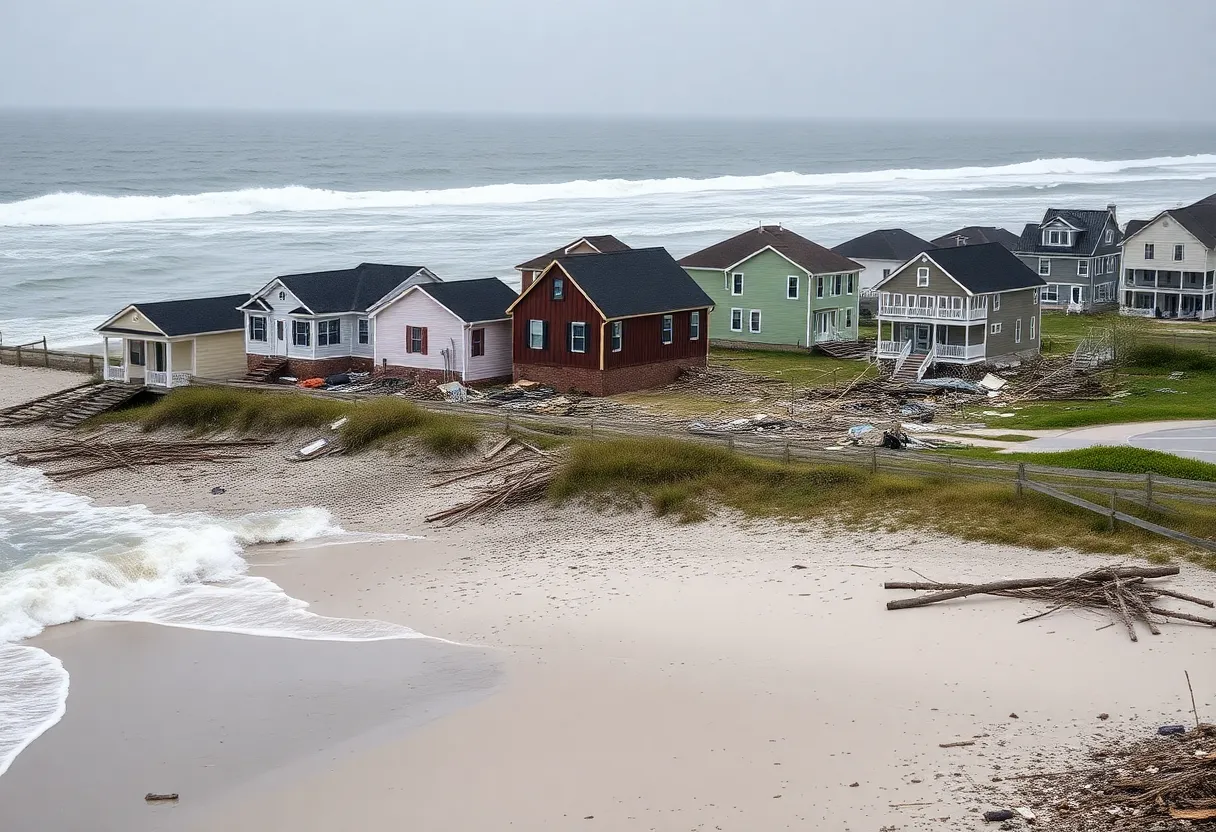Rising Tides: The Struggles of North Carolina’s Coastal Communities
As communities along the beautiful coastline of North Carolina grapple with the harsh realities of climate change, the effects are becoming all too real. Many residents are waking up to a new normal where coastal erosion and rising sea levels threaten their homes, livelihoods, and cherished way of life.
Homes Falling into the Sea
One of the hardest-hit areas is Hatteras Island, where the consequences of coastal erosion are painfully evident. Since 2020, a staggering 10 homes have collapsed into the ocean as erosion rates soar above 15 feet annually. Local resident Adam Bittman stands witness to the despair that his neighbors feel, saying, “What I see is the future I don’t want for my children. We need to do something about it … years ago.”
This kind of loss isn’t just a personal heartbreak; it symbolizes a growing crisis that is reshaping coastal communities up and down North Carolina’s shores. Indeed, Rick Luettich, director of the Institute of Marine Sciences, has pointed out the increasingly visible impacts of rising sea levels. “What we’re seeing now are high tides flooding into the streets. High tides with just a little wind are causing flooding in areas that haven’t flooded in the past,” he observed. The daily lives of residents are being adversely affected.
Financial Struggles Amidst Erosion
With erosion accelerating, homeowners face some tough choices. For people like Sharon Troy, the reality is grim. She has seen her house slowly succumb to the ocean, trapped by financial constraints that prevent her from moving or buying a safer lot. “It’s hard to be proactive when you don’t have the funds to move your house,” she lamented. Without coverage for erosion damage, many find themselves stuck in a precarious situation, waiting for disaster to strike.
The cleanup from collapsed homes is not just emotional—it can also be costly and hazardous. Various solutions have been proposed, but most come with hefty price tags. One common fix is beach nourishment, which involves pumping sand onto beaches to restore them. While this offers temporary relief, it can cost tens of millions of dollars and requires ongoing maintenance.
The Push for Solutions
Another possible route is through buyouts, where homeowners are compensated for their at-risk properties. While there has been some success with this method—like the most recent buyouts by the National Park Service—more funding is needed to continue such efforts. Unfortunately, federal buyout programs typically kick in only after a disaster occurs, making preemptive measures nearly impossible.
Environmental advocates are also pushing for a ban on new beachfront developments that would put additional homes at risk. However, this strategy faces its own set of challenges, particularly from those concerned about the economic impact on tourism and real estate—two industries that continue to thrive despite the looming threat of climate change.
High Demand Amid Rising Waters
Ironically, despite the dangers presented by rising sea levels, the demand for coastal property remains incredibly high. In Wilmington, data shows a worrying trend, with sea levels rising by seven inches since 2010—which is more than double the 2.7 inches recorded from 1980 to 2009. According to NOAA, we could be looking at a potential rise of one to two feet by 2050 along the North Carolina coast.
As Dare County Commissioner Danny Couch pointed out, “If you stick your head in the sand, you’re going to find yourself being reactive instead of proactive.” And yet, the prospect of new developments remains attractive. Some rental homes in the Outer Banks are listed for as much as $40,000 for a week during peak seasons, indicating a golden opportunity that still draws investments.
A Call for Long-Term Solutions
As the people of North Carolina confront this existential crisis, the call for long-term thinking grows louder. Dave Hallac, superintendent of Cape Hatteras National Seashore, stresses the importance of looking ahead. “We have to be thinking 10 or 20 years ahead so we can hopefully prevent these types of situations,” he emphasized.
The debris from collapsing homes—pieces of stairways, fragments of pools, and rusty nails—has become a haunting reminder of the crisis that threatens the coastal community. Allen Dufala, a resident of Buxton, echoes the urgency felt by many when he states, “It’s not an issue of finding blame now; let’s just fix it.”
The Future Hangs in the Balance
As North Carolina stands at this critical juncture, addressing climate change and rising sea levels becomes more essential than ever. The future of the state’s coastline, and the communities that rely on it, hinges on our collective ability to adapt and take action now.

Author: STAFF HERE OUTER BANKS WRITER
The OBX STAFF WRITER represents the experienced team at HEREOBX.com, your go-to source for actionable local news and information in the Outer Banks, Dare County, and beyond. Specializing in "news you can use," we cover essential topics like product reviews for personal and business needs, local business directories, politics, real estate trends, neighborhood insights, and state news affecting the area—with deep expertise drawn from years of dedicated reporting and strong community input, including local press releases and business updates. We deliver top reporting on high-value events such as the Outer Banks Seafood Festival, NC VIP Fishing Tournament, and NCBBA Red Drum Tournament. Our coverage extends to key organizations like the Outer Banks Chamber of Commerce and Outer Banks Community Foundation, plus leading businesses in tourism, retail, and hospitality that power the local economy such as Kitty Hawk Kites, Outer Banks Mall, and Avon Fishing Pier. As part of the broader HERE network, including HEREAsheville.com, HERECharlotte.com, HEREGreensboro.com, and HERERaleigh.com, we provide comprehensive, credible insights into North Carolina's dynamic landscape.





